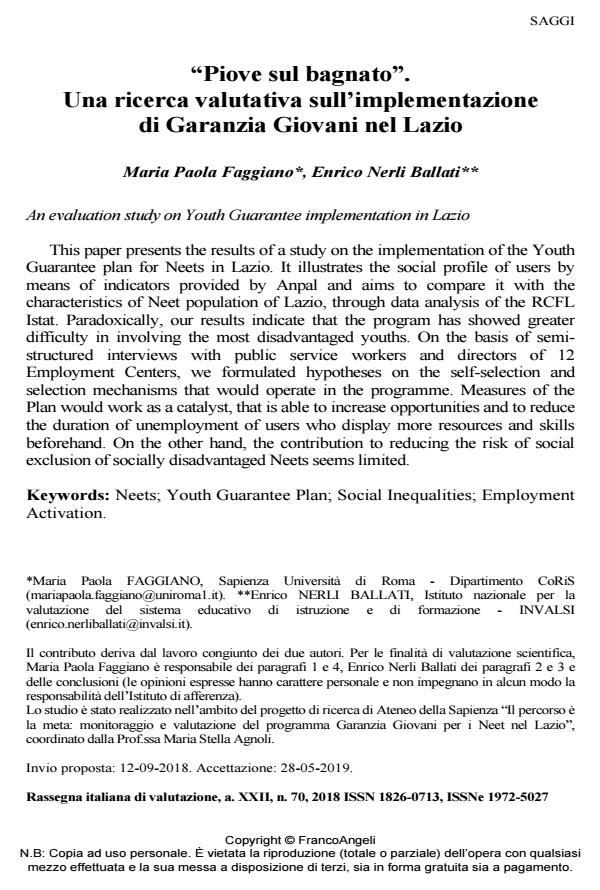An evaluation study on Youth Guarantee implementation in Lazio
Journal title RIV Rassegna Italiana di Valutazione
Author/s Maria Paola Faggiano, Enrico Nerli Ballati
Publishing Year 2019 Issue 2018/70
Language Italian Pages 22 P. 30-51 File size 466 KB
DOI 10.3280/RIV2018-070003
DOI is like a bar code for intellectual property: to have more infomation
click here
Below, you can see the article first page
If you want to buy this article in PDF format, you can do it, following the instructions to buy download credits

FrancoAngeli is member of Publishers International Linking Association, Inc (PILA), a not-for-profit association which run the CrossRef service enabling links to and from online scholarly content.
This paper presents the results of a study on the implementation of the Youth Guarantee plan for Neets in Lazio. It illustrates the social profile of users by means of indicators provided by Anpal and aims to compare it with the characteristics of Neet population of Lazio, through data analysis of the RCFL Istat. Paradoxically, our results indicate that the program has showed greater difficulty in involving the most disadvantaged youths. On the basis of semistructured interviews with public service workers and directors of 12 Employment Centers, we formulated hypotheses on the self-selection and selection mechanisms that would operate in the programme. Measures of the Plan would work as a catalyst, that is able to increase opportunities and to reduce the duration of unemployment of users who display more resources and skills beforehand. On the other hand, the contribution to reducing the risk of social exclusion of socially disadvantaged Neets seems limited.
Keywords: Neets; Youth Guarantee Plan; Social Inequalities; Employment Activation.
Maria Paola Faggiano, Enrico Nerli Ballati, "Piove sul bagnato". Una ricerca valutativa sull’implementazione di Garanzia Giovani nel Lazio in "RIV Rassegna Italiana di Valutazione" 70/2018, pp 30-51, DOI: 10.3280/RIV2018-070003